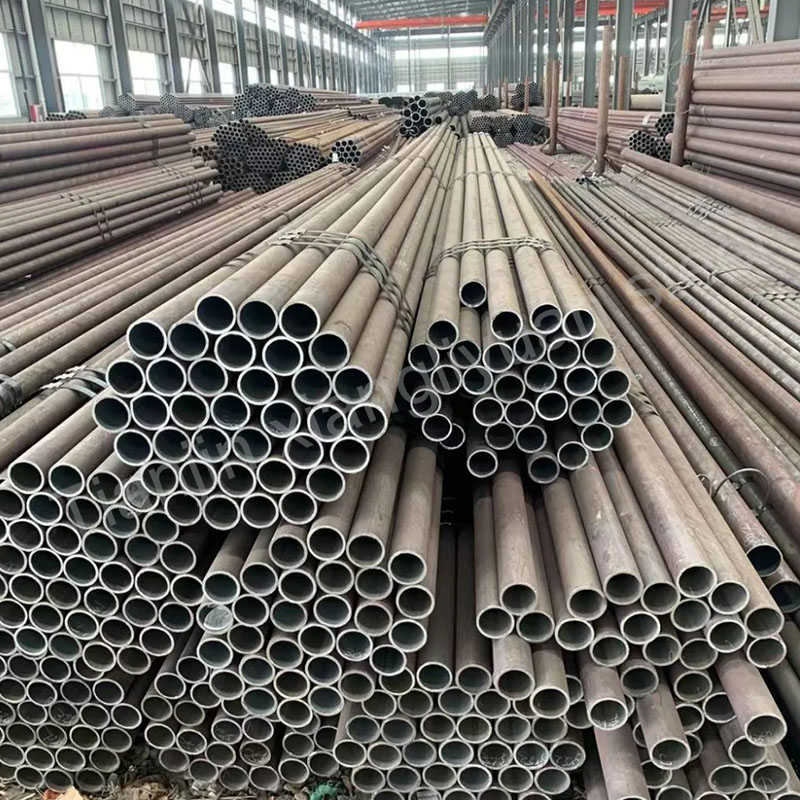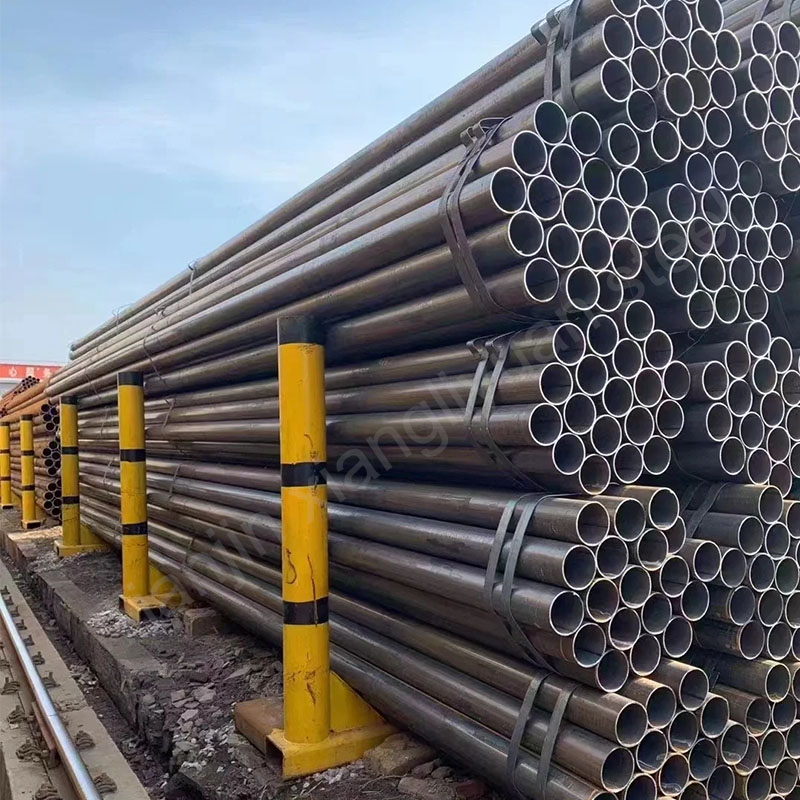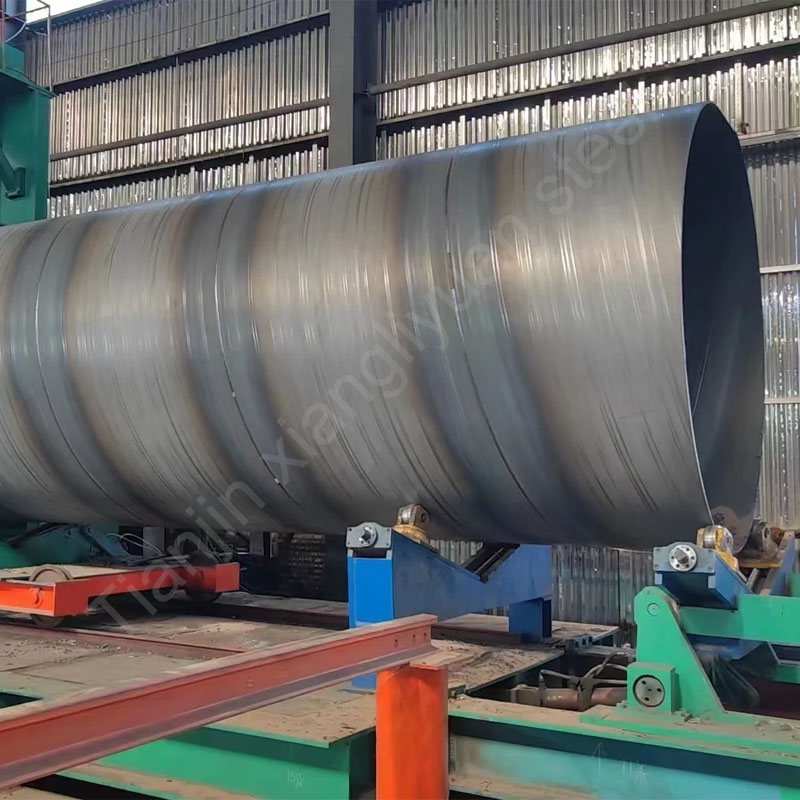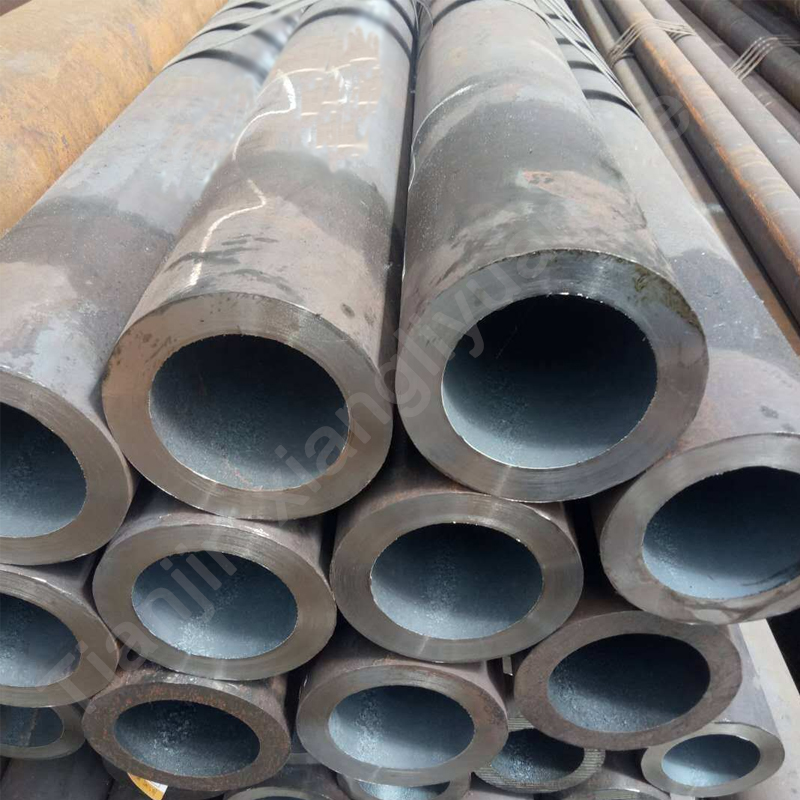Carbon steel pipes are fundamental components in countless industrial, commercial, and residential applications worldwide. Defined primarily by their carbon content, these pipes offer an exceptional balance of strength, durability, malleability, and cost-effectiveness. Understanding the different classifications of carbon steel pipes is crucial for engineers, project managers, and procurement specialists to select the optimal product for their specific needs, ensuring safety, efficiency, and longevity.
This definitive guide delves into the comprehensive classification system for carbon steel pipes, breaking them down by manufacturing process, carbon content, structure and shape, application, and surface treatment.
1. Classification by Manufacturing Process
The method used to manufacture a carbon steel pipe directly impacts its mechanical properties, dimensional tolerances, and suitable applications. This is the most fundamental way to classify carbon steel pipes.
A. Seamless Steel Pipe (SMLS)
Seamless pipes are manufactured from a solid cylindrical steel billet. The billet is heated and then pierced through the center with a mandrel to create a hollow tube without any seams or weld joints.
Key Features:
Superior Strength: The absence of a weld seam eliminates a potential point of weakness, making seamless pipes stronger and more reliable for high-pressure applications.
Uniform Structure: They have a homogeneous structure around the circumference, ensuring consistent strength and performance.
Better for High-Pressure: Ideal for critical applications in oil and gas, power generation, and high-pressure steam lines.
Common Standards: ASTM A106 (High-Temperature Service), ASTM A53 (General Service), ASTM A333 (Low-Temperature Service).
Applications: Pressure vessels, boilers, hydraulic systems, oil and gas exploration and transmission, chemical processing plants.
B. Welded Steel Pipe (ERW, EFW, LSAW)
Welded pipes are formed by rolling a steel plate or coil into a cylindrical shape and then welding the seam shut. The welding method defines the sub-categories.
Electric Resistance Welded (ERW) Pipe: The edges are heated using an electric current and then forged together under pressure to form the weld. Modern ERW processes produce high-quality welds that are often indistinguishable from the base metal.
Applications: Water pipelines, fencing, scaffolding, structural applications, oil and gas gathering lines.
Longitudinally Submerged Arc Welded (LSAW) Pipe: A steel plate is bent and formed into a cylinder, and the long seam is welded internally and externally using the Submerged Arc Welding (SAW) process. LSAW pipes typically have larger diameters and thicker walls.
Applications: Long-distance high-pressure oil and gas transmission pipelines, piling, structural columns.
Spiral Welded (SSAW) Pipe: A continuous steel coil is helically wound and the seam is welded along the spiral. This method allows for the production of large-diameter pipes from narrower coils.
Applications: Water transmission, piling, and other applications where high internal pressure is not the primary concern.
Electric Fusion Welded (EFW) Pipe: This is a broader term that generally refers to pipes welded using an automated process where filler metal is used. It can include some specialized LSAW and spiral weld pipes.
2. Classification by Carbon Content
The amount of carbon in the steel alloy directly influences its hardness, strength, and ductility.
Low Carbon Steel Pipe (Mild Steel Pipe): Contains less than 0.25% carbon. It is the most common and versatile type, known for its excellent ductility, ease of welding, and machining.
Applications: General structural work, furniture, automotive frames, and low-pressure fluid conveyance.
Medium Carbon Steel Pipe: Contains between 0.25% and 0.60% carbon. It offers higher strength and hardness than mild steel but with reduced ductility. It can be heat-treated to enhance its properties.
Applications: Machinery parts, axles, gears, and high-strength structural components.
High Carbon Steel Pipe: Contains between 0.60% and 1.25% carbon. It is very hard and strong but also brittle, with poor weldability. It is less common for piping and more often used for tools and wear-resistant parts.
3. Classification by Structure, Shape, and Application
This classification groups pipes based on their final form and intended use, often overlapping with manufacturing standards.
A. Structural Steel Pipe
These pipes are designed to bear loads and provide structural support in construction and engineering projects. Dimensional accuracy and strength are key.
Types: Hollow Structural Sections (HSS), including square steel tube and rectangular steel tube.
Standards: ASTM A500, ASTM A1085.
Applications: Building frames, bridges, stadiums, industrial platforms, and vehicle chassis.
B. Carbon Steel Line Pipe
A specialized category of welded or seamless pipe designed specifically for the transportation of oil, gas, and other fluids over long distances. They are subject to stringent quality and testing requirements.
Standards: API 5L (American Petroleum Institute). This standard specifies grades like B, X42, X52, X65, X70, etc., indicating the yield strength.
Applications: Onshore and offshore oil and gas transmission pipelines, hydrocarbon product pipelines.
C. Pressure Tube and Boiler Tube
These are high-performance seamless pipes designed to withstand intense internal pressure and high temperatures.
Standards: ASTM A179 (for heat exchanger tubes), ASTM A192 (for high-pressure boiler tubes), ASTM A106 (for general pressure service).
Applications: Boilers, heat exchangers, superheaters, and condensers in power plants and refineries.
D. Mechanical Tube
Used in the manufacturing of mechanical components where precise dimensions, excellent surface finish, and strength are critical.
Applications: Cylinder barrels, hydraulic cylinders, bearings, and automotive components.
4. Classification by Surface Treatment / Coating
Surface treatments are applied to carbon steel pipes to enhance their corrosion resistance and longevity, especially in harsh environments.
A. Black Steel Pipe
This pipe has a dark, iron-oxide scale left on its surface from the manufacturing process. It is uncoated and is primarily used for transporting gas and water, or for structural purposes where corrosion is not a major concern. The name refers to the dark surface, not the color of the steel itself.
B. Galvanized Steel Pipe
This pipe has a protective zinc coating applied to prevent rusting. The galvanization can be done via two main processes:
Hot-Dip Galvanizing (HDG): The pipe is immersed in a molten zinc bath, resulting in a thick, durable coating that provides excellent corrosion protection.
Electro-Galvanizing: A thinner layer of zinc is applied using an electrochemical process. It offers a smoother finish but less corrosion resistance than HDG.
Applications: Water supply lines, fencing, handrails, outdoor structures, and fire sprinkler systems.
C. Pre-Galvanized Pipe (PGP)
Refers to a steel sheet or coil that is galvanized before it is formed into a pipe (typically through the ERW process). This results in a uniform but thinner coating compared to hot-dip galvanizing.
How to Choose the Right Carbon Steel Pipe?
Selecting the correct carbon steel pipe requires a careful analysis of your project’s requirements. Consider the following factors:
Pressure and Temperature: Will the pipe be subjected to high internal pressure or extreme temperatures? Seamless pipes or high-grade LSAW/ERW pipes are typically required.
Corrosion Environment: Is the pipe for indoor use, buried underground, or exposed to marine environments? Galvanized steel pipes or other coated options are necessary for corrosive conditions.
Application Purpose: Is it for structural support (ASTM A500), fluid transport (API 5L, ASTM A106), or mechanical parts (Mechanical Tube)? The standard dictates the chemical and mechanical properties.
Budget and Availability: Welded pipes (ERW) are generally more cost-effective than seamless pipes and are perfectly suitable for many low-to-medium pressure applications.
Size and Dimension: Required outer diameter (OD), wall thickness (WT/Schedule), and length. Standard sizes are governed by schedules (e.g., SCH 40, SCH 80) which define the pressure rating.
The world of carbon steel pipes is diverse and highly specialized. From the robust integrity of seamless pipes for high-pressure oil and gas to the cost-effective versatility of ERW pipes for water and structure, and the corrosion-fighting power of galvanized pipes, each classification serves a distinct purpose.
As a leading supplier in the steel industry, we stock a comprehensive inventory of carbon steel pipes to meet every specification and standard. Our technical experts are ready to help you navigate these classifications and identify the perfect pipe solution for your project’s performance, budget, and timeline.
Contact Tianjin Xiangliyuan Steel today for a quote or to speak with our specialists about your carbon steel pipe needs.






